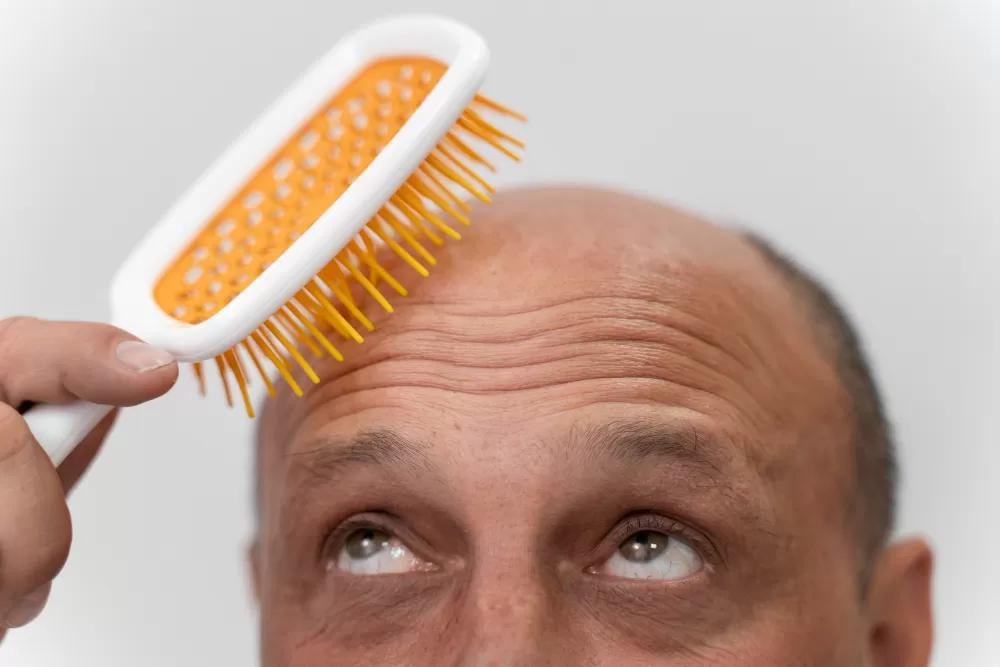Hair transplantation is a popular solution for individuals experiencing hair loss. However, one of the most common questions is when the results of a hair transplant become visible. The timeline for seeing results depends on factors such as the procedure type, individual hair characteristics, and the recovery process. In this article, we’ll explore the timeline of hair transplant results, factors affecting the outcome, and key considerations for optimal results.
What Is a Hair Transplant?
A hair transplant involves transferring healthy hair follicles (grafts), typically from the back of the head (donor area), to areas with thinning or no hair. Modern techniques like FUE (Follicular Unit Extraction) and DHI (Direct Hair Implantation) offer natural and long-lasting results. However, the success of a hair transplant doesn’t depend solely on the procedure; the post-operative care and recovery process are equally critical.
The Recovery Process After a Hair Transplant
The recovery period significantly influences when hair transplant results become visible. Here’s a general timeline of what to expect post-procedure:
First Week: Initial Healing Phase
Days 1-3: The transplanted area may experience redness, mild swelling, and sensitivity. Crusting begins to form around the grafts as they settle into their new location.
Days 4-7: Crusts start to fall off, and the first hair wash is typically performed following the doctor’s instructions. During this time, the transplanted hair remains in place, but patients should prepare for temporary shedding (shock loss).
First Month: Shock Loss Phase
Weeks 2-4: Between 2 to 4 weeks post-procedure, most transplanted hairs fall out in a process called “shock loss.” This is a normal part of the recovery, where the hair follicles enter a resting phase before producing new hair. It’s important not to panic, as the follicles remain healthy beneath the scalp.
3-6 Months: New Hair Growth Phase
Month 3: New hair strands begin to emerge from the transplanted follicles. These hairs are typically fine and thin at first, and the density is not yet at its peak.
Months 4-6: The hair becomes more noticeable and starts to thicken. Approximately 40-60% of the final hair growth is visible during this period, marking the first significant results.
6-12 Months: Maturation and Thickening Phase
Months 6-9: The hair becomes thicker, stronger, and more natural-looking. Density increases, and the results of the transplant become more evident.
Month 12: This is when the full results of the hair transplant are typically visible. The transplanted hair blends seamlessly with natural hair, achieving the desired appearance.
12-18 Months: Final Results
For some patients, particularly those with slower scalp healing or thicker hair strands, the final results may take up to 18 months to fully manifest. By this time, the hair achieves a completely natural look, and any transplant-related marks are typically gone.
Factors Affecting Hair Transplant Results
The timeline and quality of hair transplant results vary based on several factors:
Individual Characteristics:
Hair Type: Fine hair may grow faster, while thicker hair may take longer to become prominent.
Age: Younger individuals often experience faster healing.
Health Condition: Conditions like diabetes, vitamin deficiencies, or immune system issues can impact recovery.
Hair Transplant Technique:
Techniques like FUE and DHI have different recovery timelines. DHI, being less invasive, may lead to quicker healing.
The number of grafts and the density of the transplant also influence the timeline.
Doctor and Clinic Quality:
An experienced surgeon and a sterile clinic environment improve graft survival rates.
Adhering to post-operative care instructions significantly affects the outcome.
Post-Procedure Care and Lifestyle:
Smoking, alcohol, and stress can slow down the healing process.
Using doctor-recommended supplements (e.g., biotin, zinc) and hair care products can promote faster hair growth.
Post-Hair Transplant Care Tips
To ensure faster and healthier results, follow these key care tips:
Follow Doctor’s Instructions: Adhere strictly to guidelines for washing, medication, and care products.
Protect the Scalp: Avoid sun exposure, excessive sweating, and physical contact with the transplant area in the first few weeks.
Maintain a Healthy Diet: A diet rich in protein, zinc, and biotin supports hair growth.
Reduce Stress: Stress can trigger hair loss and hinder recovery.
Frequently Asked Questions
Are Hair Transplant Results Permanent?
Yes, hair transplant results are generally permanent. Hair follicles taken from the donor area (typically the back of the head) are genetically resistant to shedding and continue to grow in their new location for years.
What Is Shock Loss?
Shock loss is the temporary shedding of transplanted hair 2-4 weeks after the procedure. It’s a natural part of the adaptation process, and new hair will grow from the healthy follicles.
Do Hair Transplant Results Vary Between Individuals?
Yes, results vary based on factors like hair type, age, health, and post-procedure care. Each person’s experience is unique, affecting the timeline and quality of results.
Conclusion
Hair transplantation is a process that requires patience. While initial results may be visible within 3-6 months, the final outcome typically takes 12-18 months to fully appear. Following your doctor’s instructions, adopting a healthy lifestyle, and staying patient are crucial for achieving successful results. If you’re considering a hair transplant, consult an experienced surgeon to set realistic expectations and prepare for the post-procedure journey.c





No comments yet. Be the first to comment!